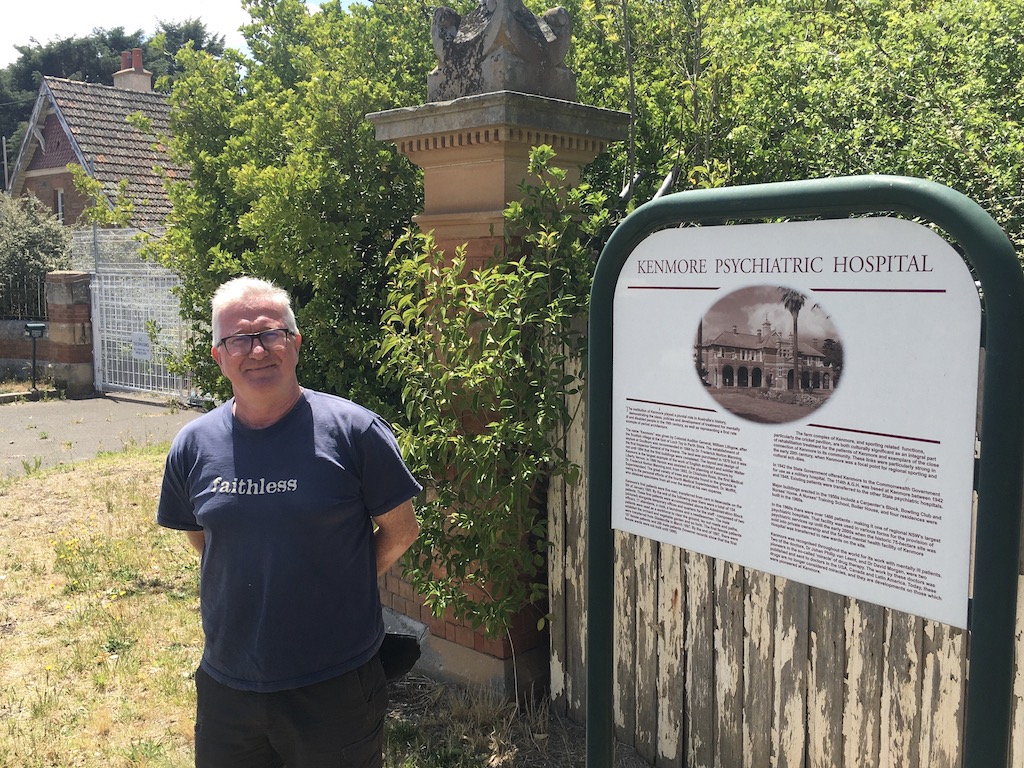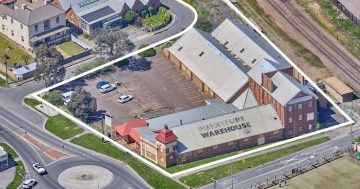
Having won awards for innovation and tackled government-owned property work, Brian Hill has found just the project to match his diverse skill set in Goulburn – reinvigorating interest in Kenmore Gardens. Photo: John Thistleton.
Brian Hill has written that Goulburn is a curious place, rich in history but also wrestling with the decay of old facilities.
Now he has joined the wrestle, not as a fighter but as a collaborator on the biggest challenge of them all – Kenmore Gardens, including the heritage buildings.
As an occupational therapist and technology project manager, Brian sees many points of interest in Kenmore’s past, including a patch of bamboo on the edge of some of its heritage buildings.
It was planted to feed a Himalayan honey bear, brought in by Kenmore’s first chief medical superintendent for therapeutic engagement with patients. Brian found the bamboo and its link to the bear in a 2009 thesis by Dr Doris Kordes about the care offered at Kenmore. That little gem of history highlights the diverse therapeutic and vocational activities that happened at Kenmore.
Still thriving today, the bamboo suggests that even though the buildings are unsafe for occupation, perhaps something can be done with the grounds.
Working with people in Goulburn with links to the old hospital, Brian is building an online history site under the headline ‘‘Kenmore can be more’’. It is a counterweight to the negative posts aimed at generating clickbait about haunted sites.
From the Central Coast and with a track record of property consultancy, Brian says repurposing Kenmore into a sustainable asset, whether it’s innovative housing or some other land use, is not without precedent elsewhere in Australia.
He cites the transformation of the former psychiatric hospital Callan Park, in Lilyfield, into the Sydney College of the Arts and Writers NSW, and the Central Coast’s Narara eco-village, once a farm boys’ home and agricultural research station.
Learning of Kenmore’s history earlier this year after his wife was appointed as a high school teacher in Goulburn, Brian began writing his blog articles and sharing what he found. Kenmore’s neglect and vandalism have not deterred him.
In one article, he writes: “It begs the broader question of why we allow such important facilities to suffer such neglect, in the face of enduring need for housing and temporary accommodation solutions at every end of the spectrum.
“I can’t help but wonder what a focused collaboration might yield for the site as a place of regional renewal, re-imagination and repurposing.” (For his blog post, go to his website Laughing Mind).
Brian has a long history of working with Defence Housing Australia building systems for property management, maintenance, occupancy and tenancy, and with the Office of Aboriginal and Torres Strait Islander Health, advising on how to commission and sustain health infrastructure in remote Australia.
He does not underestimate the challenges of Kenmore, a vast property in private ownership since 2003, which has been plundered and torched by vandals.
“But there is a lot of inventiveness and innovation among the architectural community that I am sure could supply some thinking in terms of how you would do some of that reinvigoration of those assets,” he said.
He would like to engage with the current Chinese owners in a spirit of collaboration to build a closer working relationship and achieve better outcomes for the site and community. He believes some form of occupancy would provide the eyes on the ground to discourage intruders.
“It’s a site needing a coalition of actors who can help breathe some of that life into it,” he said. “That obviously has to be done with the owners’ engagement and willingness.”
Embarking on his quest for more information, his first blog post was headlined ”From Kenmore to No More”. Meeting Goulburn historian Leone Morgan, and former mayor Bob Kirk, and taking in its history, he has discarded that headline.
“That is doing it a disservice,” he said. “It can be more. That requires having the right sort of facilitating conversations that can reset the hopes and dreams of the community, that means digging into some of the stories of what it was and working out how you can bring some of that into the ‘now’ and into the ‘tomorrow’.”









